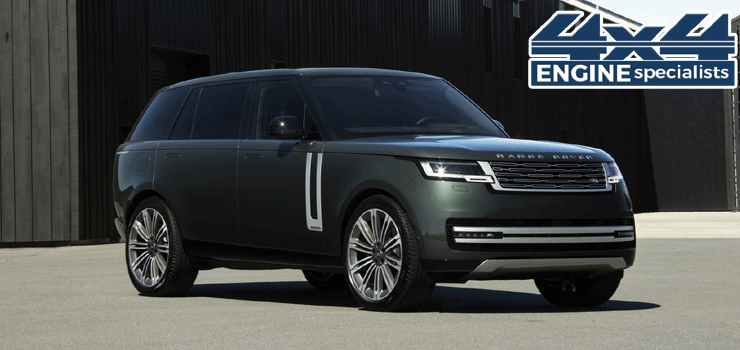Introduction
In the quest for sustainable mobility, automotive manufacturers are continually innovating to enhance the efficiency of their vehicles. The Range Rover, renowned for its luxury and performance, embraces this ethos with its 2.0 engine. We delves into the key features of this engine, exploring how each element contributes to improved efficiency and a more sustainable driving experience.
Turbocharged Performance
At the heart of the Range Rover 2.0 engine lies a turbocharger, a technology that has revolutionized the automotive industry. By compressing air and forcing it into the engine’s combustion chamber, the turbocharger increases power output without a significant increase in engine size. This enables the Range Rover to deliver impressive performance while maintaining fuel efficiency, as it effectively extracts more energy from every drop of fuel.
Direct Fuel Injection
Direct fuel injection is another hallmark feature of the Range Rover 2.0 Engine, offering precise control over the fuel-air mixture delivered to the combustion chamber. Unlike traditional port fuel injection systems, which spray fuel into the intake manifold, direct injection injects fuel directly into the combustion chamber at high pressure. This enhances combustion efficiency, resulting in improved fuel economy and reduced emissions.
Variable Valve Timing
Variable valve timing (VVT) is a sophisticated engine technology that optimizes airflow and combustion efficiency across different engine speeds and loads. By adjusting the timing of the intake and exhaust valves, VVT ensures that the engine operates at its peak performance level under various driving conditions. In the Range Rover 2.0 Engine, VVT contributes to both enhanced power delivery and improved fuel efficiency, striking a balance between performance and economy.
Lightweight Construction
Weight reduction is a crucial strategy for improving vehicle efficiency, as it reduces the amount of energy required to accelerate and propel the vehicle. The Range Rover 2.0 Engine incorporates lightweight materials such as aluminum and high-strength alloys in its construction, minimizing overall weight without compromising structural integrity. This not only improves fuel economy but also enhances handling and agility, making for a more enjoyable driving experience.
Start-Stop Technology
In urban driving conditions where idling is common, fuel consumption can be significantly reduced by shutting off the engine when the vehicle is stationary. Start-stop technology, featured in the Range Rover 2.0 Engine, automatically stops the engine when the vehicle comes to a halt and restarts it seamlessly when the driver releases the brake pedal. This feature not only conserves fuel but also reduces emissions, making it an essential component of the engine’s efficiency-focused design.
Regenerative Braking System
Braking generates kinetic energy, which is typically dissipated as heat through the brake pads and discs. However, the Range Rover 2.0 Engine incorporates a regenerative braking system that harnesses this energy and converts it into electrical energy, which is then stored in the vehicle’s battery. By recovering and reusing this energy during acceleration, the system reduces the workload on the engine and improves overall efficiency, particularly in stop-and-go driving conditions.
Aerodynamic Design
Aerodynamics play a critical role in vehicle efficiency, especially at higher speeds where air resistance becomes more pronounced. The Range Rover 2.0 Engine boasts a sleek and aerodynamic design, with carefully sculpted body lines and optimized airflow channels. These features reduce drag and turbulence, allowing the vehicle to slice through the air more effortlessly and consume less fuel during highway cruising.
Intelligent Engine Management System
Central to the efficiency of the Range Rover 2.0 Engine is its intelligent engine management system, which continuously monitors and adjusts various parameters to optimize performance and economy. From fuel injection timing to turbocharger boost pressure, this system fine-tunes every aspect of engine operation in real-time, ensuring that the vehicle delivers maximum efficiency without sacrificing power or responsiveness. Best information about the range rover engine visit us here at https://4x4enginespecialists.co.uk/ .
Conclusion
In the pursuit of sustainability and efficiency, the automotive industry continues to push the boundaries of innovation. The Range Rover 2.0 Engine exemplifies this ethos, integrating a myriad of advanced technologies to deliver both impressive performance and fuel efficiency. From turbocharged power delivery to intelligent engine management, each feature plays a crucial role in maximizing the engine’s efficiency while minimizing its environmental footprint. As automotive engineering evolves, engines like the Range Rover 2.0 pave the way for a greener and more sustainable future on the road.


